Heneghan Peng wins Moscow’s NCCA competition
By Bustler Editors|
Friday, Dec 27, 2013
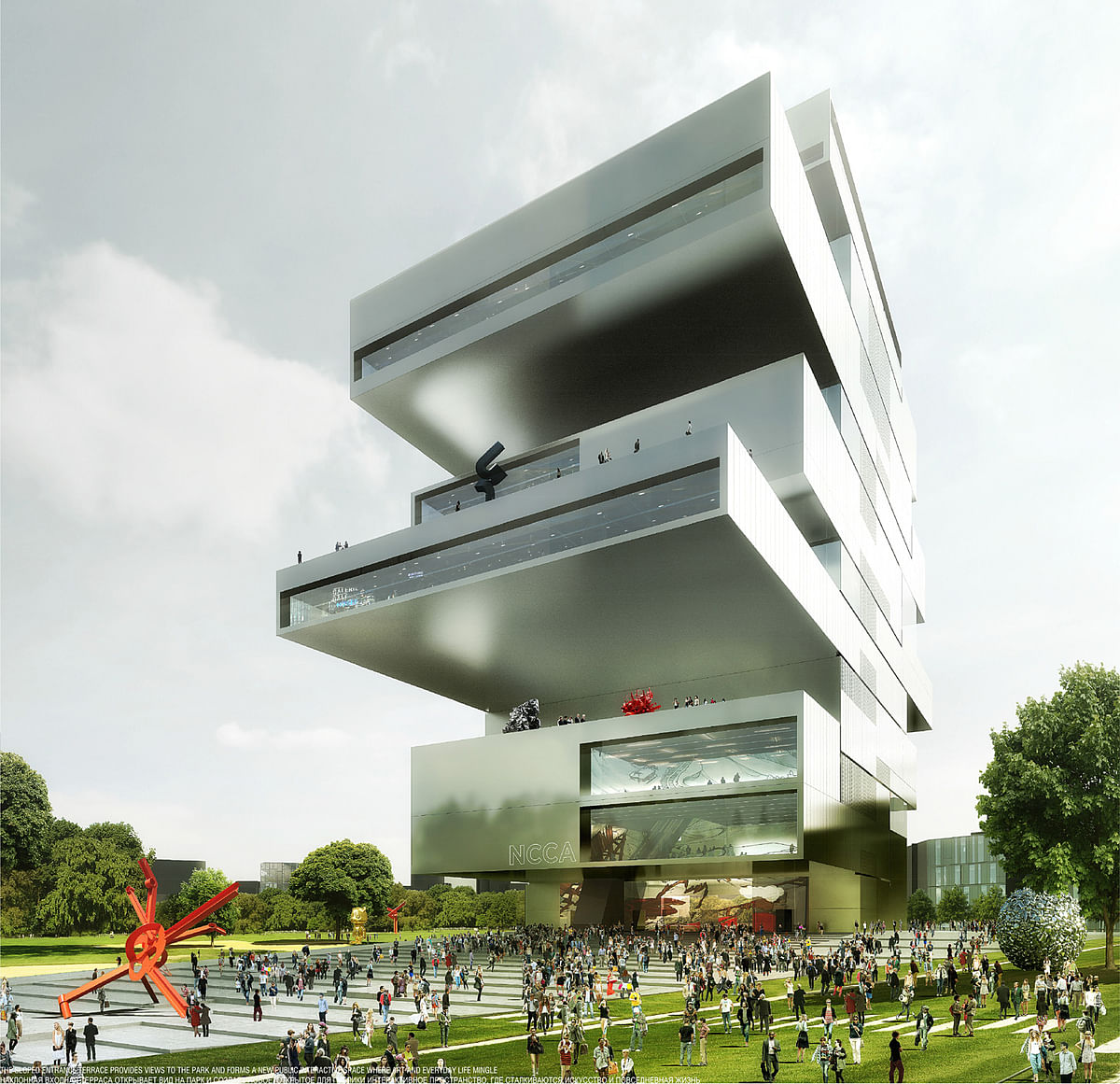
Related
Christmas came early for Heneghan Peng Architects: the Irish firm was announced on December 23 as the final winner of the international competiton for Moscow’s new National Center for Contemporary Arts (NCCA).
The other two finalist teams were Spanish Nieto Sobejano Arquitectos and Russian practice MEL. Probably not so high up on the NCCA Board of Trustees' nice list...
Read on for a project description of Heneghan Peng's winning proposal.
"This proposal positions the NCCA building as a vertical element at the centre of Khodynskoe Pole rising above Aviapark. The verticality concentrates the activities on the ground to create an intensity at a single point in this vast space. Given the scale and relative sparsenesss of activities in the area, the aim is to concentrate the flow of people to generate an excitement and energy which can then expand into other areas as the park develops."
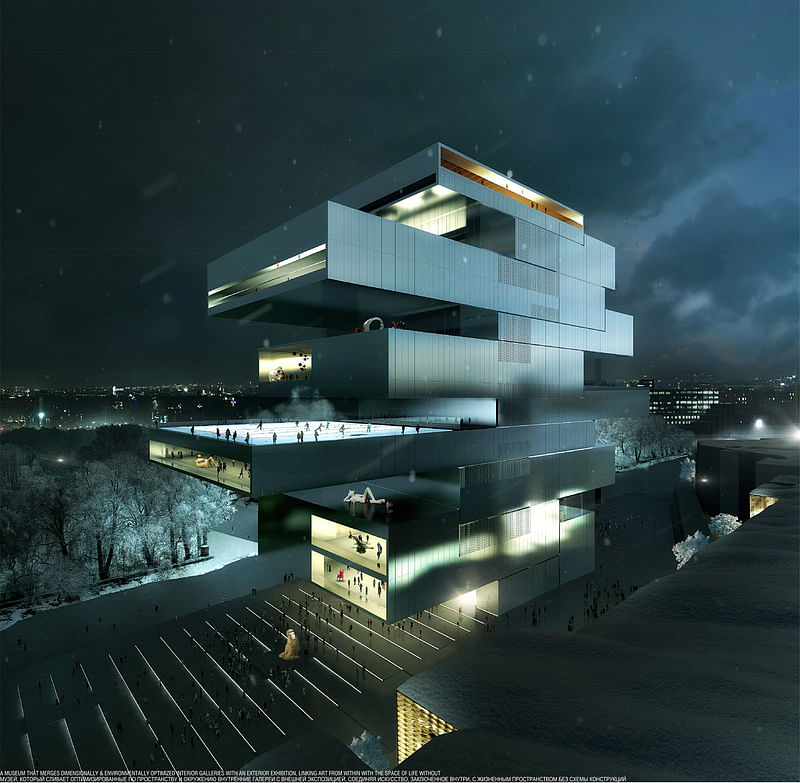
"In this proposal, the exhibition spaces are designed as a series of stacked galleries allowing people to either visit a particular gallery of interest or browse through the entire collection. The advantage of the vertical organisation is that galleries are quickly accessible, allowing one to go straight to a single floor without moving horizontally through layers of gallery."
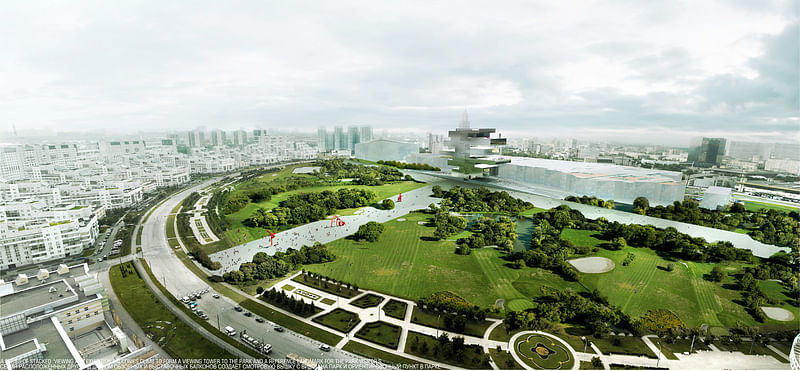
"The landscape proposal responds to the scale of the park, and to its history as an airfield. The Runways are retained as elements of intensity and activity while the remaining areas are conceived of as a naturalistic landscape. In the middle of all this development, on the edge of this large city, an intense natural environment is proposed to afford a space apart from the everyday world of apartments and cities. The Runways are proposed as the exception to this intense nature, becoming home to a new range of activities: ice rinks, formal flower gardens, and skateboard areas."
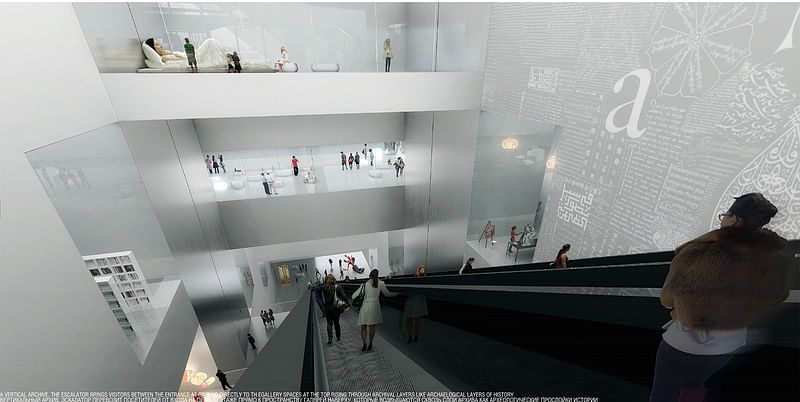
"The organisational strategy is driven by the following considerations:
— Locating the exhibition spaces as a destination at the top of the Building.
— Utilising the NCCA building to make a focal point of activities on the ground floor.
— Creating an awareness of all of the Museum’s activities for the visitor.
As with any travel plan, the main issue is how easily and quickly one can navigate the building; an escalator leads from the foyer to the exhibition, travelling through the storage workshop and admin areas. The escalator cuts through the ‘working museum’ as if through archaeological layers, viewing the ‘back story’ of the exhibition."
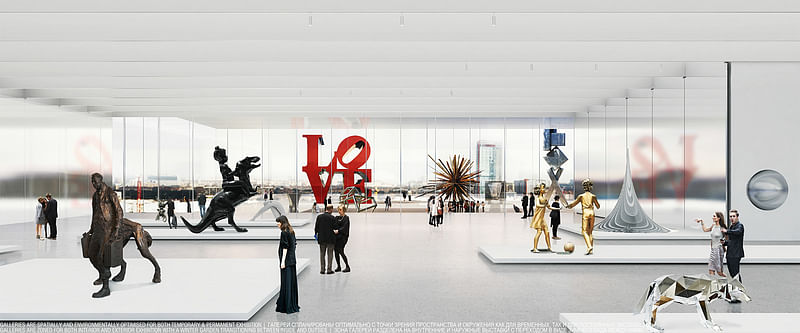
"There are a multitude of possible routes to facilitate a multitude of visitors, from browsers to specialists. A multi-level Foyer allows the design to negotiate the various site and service challenges while responding to the possibilities offered by the park. The NCCA is situated at a nexus, a vertical core linking Park, Aviapark and Museum.
Exhibition spaces are designed as flexible space, as trays of varying sizes and heights which can accommodate a variety of exhibitions. The Architect provides the infrastructure, the curators and artists make the Museum."
Images courtesy of the NCCA competition.

Share
1 Comment
Alexander Walter · Sep 26, 18 10:25 PM
UPDATE: Russia cancels plans for ambitious NCCA museum in Moscow due to lack of funding http://bit.ly/2xVi7hoComment as :